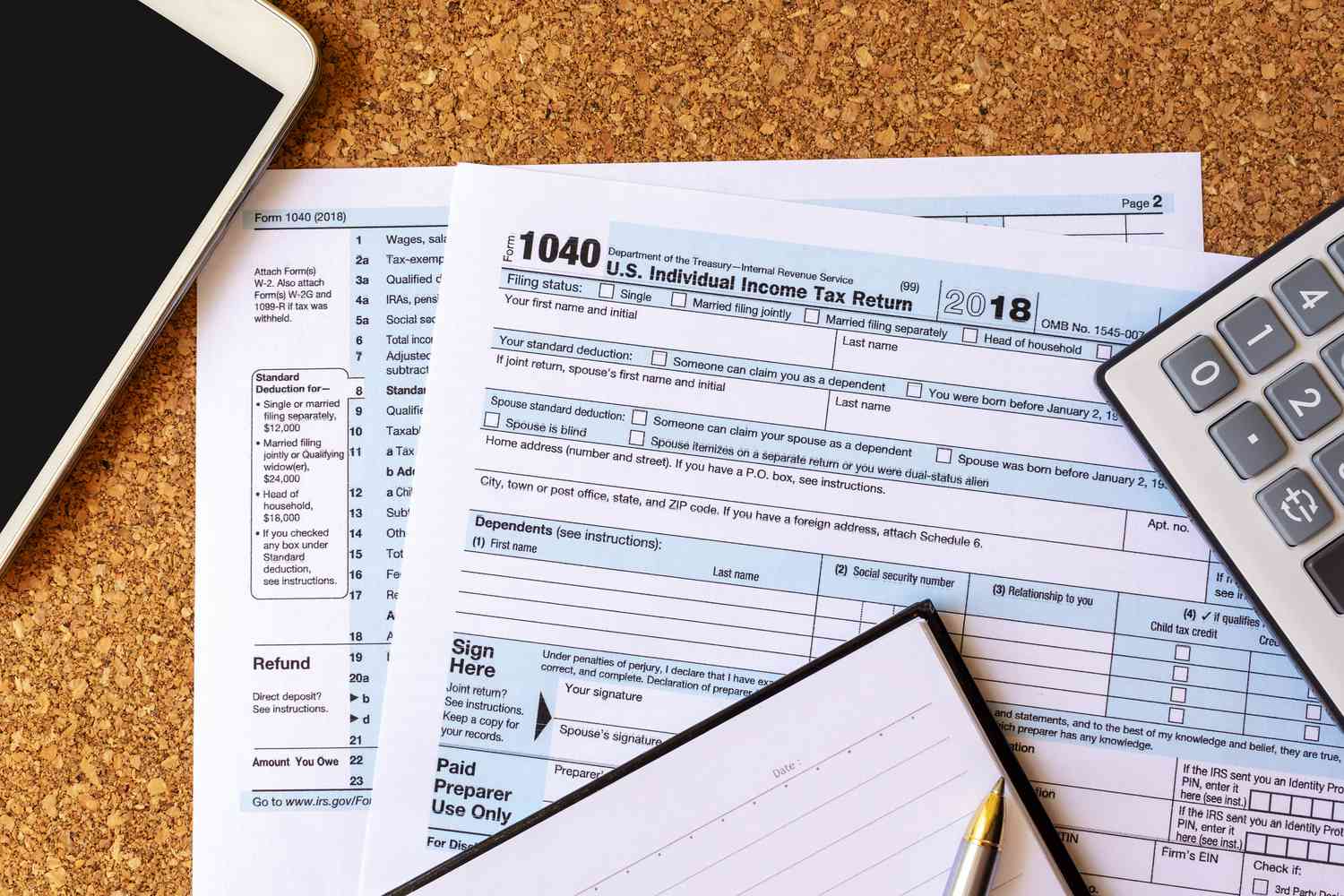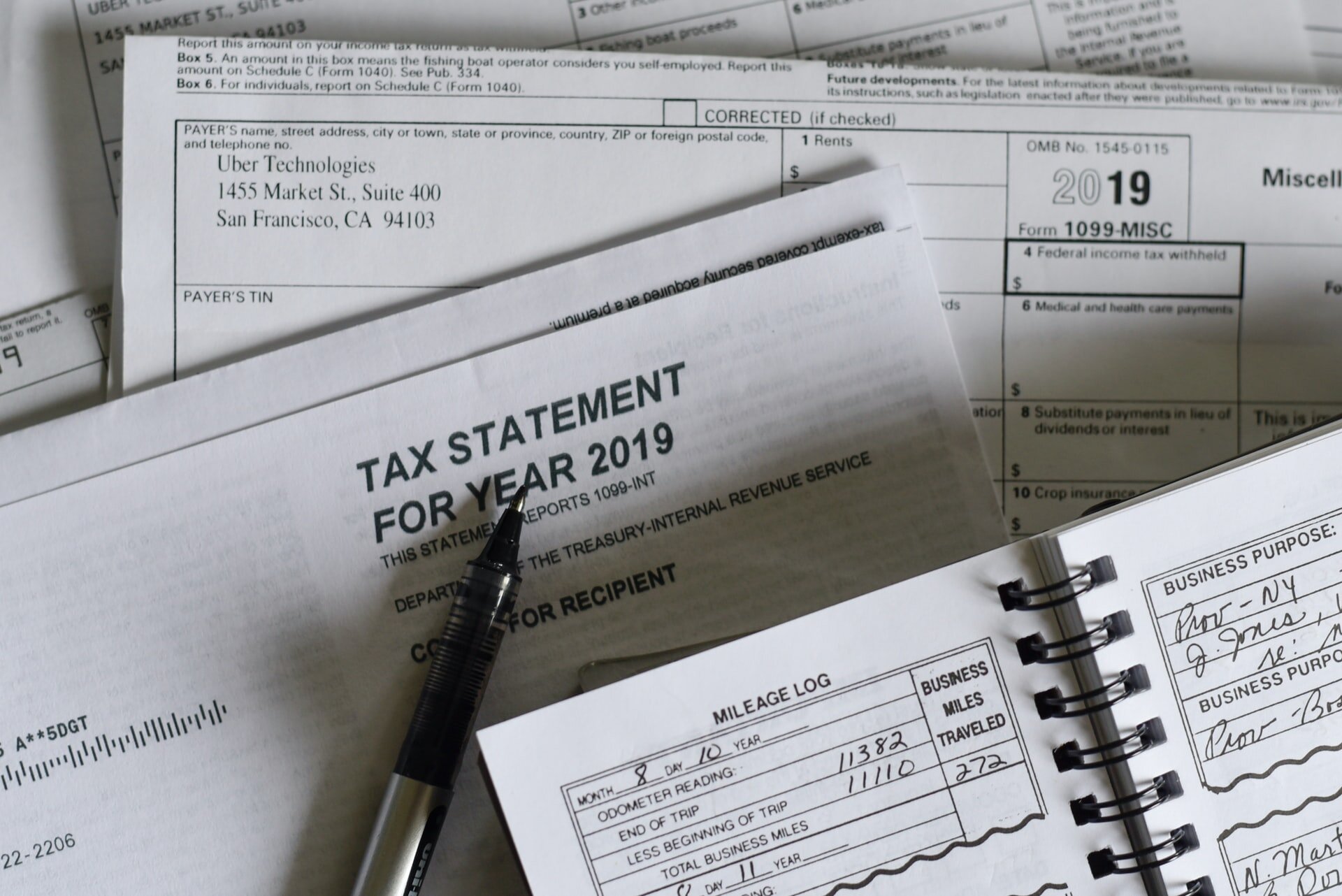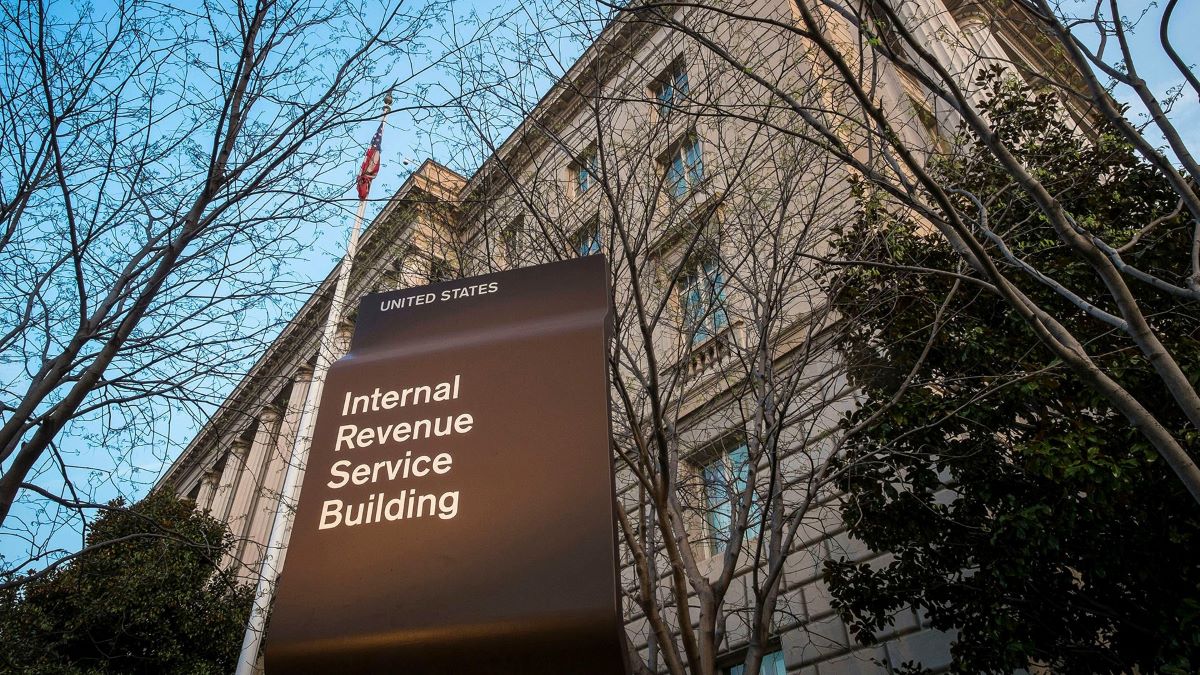

Finance
How To Respond To IRS Notice Cp11
Modified: December 29, 2023
Learn how to effectively respond to IRS Notice Cp11 and navigate your finances with expert tips and guidance on handling this important financial matter.
(Many of the links in this article redirect to a specific reviewed product. Your purchase of these products through affiliate links helps to generate commission for LiveWell, at no extra cost. Learn more)
Table of Contents
Introduction
Receiving a notice from the Internal Revenue Service (IRS) can be a daunting experience for anyone. One of the most common notices that taxpayers receive is IRS Notice CP11. This notice typically alerts taxpayers that there is a discrepancy between the income they reported on their tax return and the information provided by third-party sources, such as employers or financial institutions.
Understanding IRS Notice CP11 is crucial to ensure that you respond appropriately and resolve any potential issues with the IRS. This notice serves as a notification that the IRS has made changes to your tax return and recalculated your tax liability accordingly. It outlines the proposed changes and provides a breakdown of any additional taxes, penalties, or interest that may be owed.
Responding to IRS Notice CP11 promptly and accurately is essential to avoid further penalties and possible audit procedures. This article will guide you through the necessary steps to effectively respond to IRS Notice CP11, from gathering the required information to following up on your response.
It is important to note that while this article offers general guidelines for responding to IRS Notice CP11, each situation may vary. It is always advisable to seek professional advice from a tax expert or tax attorney who can provide personalized guidance based on your specific circumstances.
Understanding IRS Notice CP11
IRS Notice CP11 is a letter that the IRS sends to taxpayers when there is a discrepancy between the income reported on their tax return and the information provided by third-party sources. This notice typically indicates that the IRS has made changes to your tax return and recalculated your tax liability.
The IRS uses various sources, such as W-2s, 1099 forms, and other tax documents, to verify the income and deductions reported on your tax return. If the information provided by these sources does not match what you reported, the IRS will send you Notice CP11 to inform you of the proposed changes.
The notice will include a summary of the proposed changes, including any adjustments to your income, deductions, or credits. It will also indicate if there are any additional taxes owed, penalties, or interest due to the changes made by the IRS. The notice will typically provide you with a specific deadline to respond and make any necessary payments or corrections.
It is important to carefully review the details of IRS Notice CP11, including the proposed changes and any supporting documentation provided by the IRS. Take note of the specific items that the IRS has adjusted and compare them with the information you originally reported on your tax return.
If you agree with the changes made by the IRS, there may be no further action required. However, if you believe there is an error or have additional documentation to support your original tax return, you will need to respond to the notice and provide the necessary information to the IRS.
Understanding IRS Notice CP11 is crucial to ensure that you respond appropriately and resolve any potential discrepancies with the IRS. By familiarizing yourself with the contents of the notice, you can take the necessary steps to address any issues and prevent further penalties or complications.
Steps to Respond to IRS Notice CP11
Receiving IRS Notice CP11 can be overwhelming, but knowing the steps to respond can help you navigate the situation with confidence. Here are the key steps you should take when responding to IRS Notice CP11:
- Read the notice carefully: Begin by thoroughly reading the notice to understand the changes the IRS has proposed to your tax return. Take note of the adjustments made and any additional taxes, penalties, or interest that are being assessed.
- Gather necessary information: Collect all the relevant documentation that supports the information you originally reported on your tax return. This may include W-2s, 1099 forms, receipts, or any other supporting documents that can substantiate your deductions or credits.
- Verify the changes: Compare the proposed changes in the notice with your original tax return and the supporting documentation. Ensure that the adjustments made by the IRS are accurate and valid.
- Determine if you agree or disagree: Based on your review, decide whether you agree with the proposed changes or if you believe there is an error. If you agree, there may be no further action required, and you can proceed with the payment if applicable. If you disagree, you will need to submit a response to the IRS.
- Prepare a response: If you disagree with the changes, it is crucial to prepare a well-documented response to the IRS. Clearly explain the reasons for your disagreement and provide any supporting documents that substantiate your position. Organize your response in a concise and professional manner.
- Include a cover letter: When submitting your response to the IRS, consider including a cover letter that briefly outlines the purpose of your correspondence. This can help clarify your intentions and provide the IRS with a clear understanding of the contents of your response.
- Send your response: Mail your response to the address provided on the notice. Be sure to use certified mail or a reliable delivery service that offers tracking to ensure that your response is received by the IRS. Keep copies of all documents and correspondence for your records.
- Follow up: After sending your response, it is essential to follow up with the IRS to confirm receipt and ensure that your case is being reviewed. You can contact the IRS directly or consult with a tax professional to inquire about the status of your response.
By following these steps, you can effectively respond to IRS Notice CP11 and address any discrepancies or issues with the IRS in a timely and appropriate manner. Remember to keep copies of all correspondence and maintain detailed records of your interactions with the IRS for future reference.
Gathering Necessary Information
When responding to IRS Notice CP11, it is crucial to gather all the necessary information and supporting documentation to substantiate your original tax return. Having the right documents on hand can help you effectively communicate your position and potentially resolve any discrepancies with the IRS. Here are some key steps to help you gather the necessary information:
- Obtain a copy of your original tax return: Start by locating a copy of your original tax return for the year in question. This will serve as a reference point during the review process and help you identify any discrepancies between your return and the IRS’s proposed changes.
- Collect income statements: Gather all relevant income statements, such as W-2s, 1099 forms, and any other documentation that verifies the income you reported on your tax return. Ensure that the amounts match what you reported on your return.
- Organize deduction and credit records: Compile any receipts, invoices, or other supporting documents that substantiate your deductions and credits. This can include expenses related to education, medical expenses, charitable contributions, or any other relevant deductions and credits claimed on your tax return.
- Gather documentation for dependents: If you claimed dependents on your tax return, gather the necessary documentation to support their eligibility, such as birth certificates, social security numbers, and proof of residency or support.
- Retrieve records for property transactions: If the notice involves a property transaction, gather records related to the purchase or sale of the property, including closing statements, loan documents, or receipts for any improvements made.
- Keep track of correspondence with the IRS: If you have already been in communication with the IRS regarding the issue raised in Notice CP11, gather copies of any letters or documents exchanged. This will help ensure that you have a comprehensive record of all relevant correspondence.
- Consult with a tax professional: If you have difficulty locating or understanding the required documentation, consider seeking assistance from a tax professional. They can guide you in gathering the necessary information and provide valuable insights based on their expertise.
By carefully gathering all the necessary information and supporting documentation, you can provide a thorough response to the IRS Notice CP11. Remember to keep copies of all documents for your records and organize them in a clear and accessible manner. This will help streamline the response process and potentially lead to a more favorable outcome.
Preparing the Response
Once you have gathered all the necessary information and supporting documentation, it’s time to prepare your response to IRS Notice CP11. This step is crucial in effectively addressing any discrepancies and providing the IRS with a clear and concise explanation of your position. Here are some important considerations when preparing your response:
- Review the proposed changes: Carefully review the changes outlined in IRS Notice CP11 and compare them with the information you originally reported on your tax return. Identify the specific items that you disagree with or believe are inaccurately assessed.
- State your disagreement or explanation: Clearly articulate your disagreement or explanation in a professional and respectful manner. State the reasons why you believe the IRS’s proposed changes are incorrect or provide a detailed explanation to support your original position.
- Provide supporting documentation: Include copies of all relevant supporting documentation that backs up your original tax return. This can include income statements, deductions, credits, or any other documents that help substantiate your position. Organize the documents in a clear and logical order.
- Be concise and to the point: Keep your response focused and avoid unnecessary repetition or lengthy explanations. Use clear and straightforward language to ensure that your message is easily understood by the IRS reviewer.
- Include your contact information: Provide your full name, address, phone number, and taxpayer identification number (such as your Social Security Number) at the beginning or end of the response. This helps the IRS match your response to your tax account and facilitates further communication if needed.
- Consider seeking professional advice: If you are unsure about how to structure your response or have complex tax issues, consider seeking advice from a tax professional. They can help you formulate a solid response and provide guidance based on their expertise and experience.
- Make copies of your response: Before sending your response to the IRS, make copies of all the documents you are submitting. This ensures that you have a record of the response for your own records and future reference.
Remember, your response should be clear, well-organized, and supported by relevant documentation. Take the time to review and revise your response to ensure accuracy and completeness. By preparing a thorough and compelling response, you increase your chances of resolving the discrepancies and reaching a satisfactory resolution with the IRS.
Sending the Response
After carefully preparing your response to IRS Notice CP11, the next step is to send it to the appropriate IRS office. Sending your response in a timely and accurate manner is crucial to ensure that it reaches the IRS within the specified deadline. Here are some important considerations when sending your response:
- Check the response deadline: Review IRS Notice CP11 to determine the specific response deadline. It is essential to send your response before the deadline to avoid any potential penalties or complications.
- Choose the appropriate mailing address: Locate the correct mailing address for the IRS office handling your case. The address will be provided on the notice itself. Make sure to double-check the address to ensure that your response reaches the correct recipient.
- Use certified mail: When sending your response, it is highly recommended to use certified mail or a reliable delivery service that offers tracking. This will provide proof of mailing and delivery, which can be important in case there are any discrepancies or delays in the future.
- Keep copies of all documents: Prior to sending your response, make copies of all the documents you are submitting. This includes your response letter, supporting documentation, and any additional correspondence. Keeping copies allows you to have a record of what was sent and can be useful for future reference if needed.
- Consider sending a duplicate copy: To ensure that your response reaches the IRS, you may want to consider sending a duplicate copy of your response to a different IRS office or via another method, such as fax or email. This can provide an additional layer of security and increase the chances of your response being received and processed promptly.
- Retain the mailing receipt: Once you have sent your response, keep the mailing receipt or tracking information provided by the postal service. This will serve as proof that your response was sent within the specified timeframe.
- Follow any additional instructions: In some cases, IRS Notice CP11 may include specific instructions or forms that need to be completed and submitted along with your response. Carefully review the notice to ensure that you have followed all necessary instructions and included any required forms or attachments.
By following these guidelines and ensuring that your response is sent accurately and within the specified deadline, you maximize the chances of a smooth and efficient resolution to the issues raised in IRS Notice CP11.
Following Up on the Response
After sending your response to IRS Notice CP11, it is important to follow up to ensure that your case is being reviewed and addressed by the IRS. Following up can help expedite the resolution process and provide you with peace of mind. Here are some key steps to consider when following up on your response:
- Keep copies of all correspondence: Maintain copies of all the documents and letters exchanged between you and the IRS. This includes your response letter, any additional supporting documentation provided, and any letters or notices received from the IRS.
- Note the response deadline: Take note of any response deadline provided by the IRS. If the deadline passes and you have not received any further communication from the IRS, it is important to follow up promptly to ensure that your case is not delayed or overlooked.
- Check the status online, if available: The IRS offers online tools and resources that allow taxpayers to check the status of their response and any updates on their case. Utilize the IRS website or other online portals to track the progress of your case and confirm that your response has been received and is under review.
- Contact the IRS directly: If you have not heard back from the IRS or if you have any concerns or questions about your case, consider reaching out to the IRS directly. Use the contact information provided in the notice or on the IRS website to inquire about the status of your response and gather any additional information you may need.
- Consult a tax professional, if necessary: If you experience difficulty in obtaining a response or if your case requires complex resolution, consider seeking guidance from a tax professional. They can assist you in navigating the IRS processes, communicate with the IRS on your behalf, and provide valuable insights and advice throughout the resolution process.
- Be patient: Resolving tax-related matters with the IRS can sometimes take time. It is important to remain patient throughout the process and allow the IRS sufficient time to review and respond to your case. However, if an unreasonable amount of time has passed without any communication, it is essential to follow up to ensure that your case is not overlooked.
Following up on your response to IRS Notice CP11 demonstrates your proactive approach and your commitment to resolving any discrepancies with the IRS. By keeping track of all correspondence, staying informed through online resources, and reaching out to the IRS as needed, you can help expedite the resolution process and ensure that your case receives the attention it requires.
Conclusion
Receiving IRS Notice CP11 can be a concerning experience, but it is important to remain calm and take the necessary steps to address the issue. By understanding the contents of the notice and following the appropriate response process, you can effectively resolve any discrepancies and maintain a positive relationship with the IRS.
In this article, we explored the steps involved in responding to IRS Notice CP11, from understanding the notice itself to following up on your response. We discussed the importance of carefully reading the notice, gathering necessary information, preparing a thorough response, and sending it to the correct IRS office. We also emphasized the significance of following up on your response to ensure that your case is being reviewed and resolved promptly.
While this article provides general guidelines for responding to IRS Notice CP11, it is important to note that each situation may vary. Consulting with a tax professional can provide valuable personalized advice based on your specific circumstances.
Remember, when responding to IRS Notice CP11, it is essential to remain organized, keep copies of all correspondence, and stay proactive throughout the process. By doing so, you can address any discrepancies effectively and achieve a favorable resolution with the IRS.
Lastly, we recommend maintaining accurate records and staying informed about any changes in tax laws or regulations that may affect your future tax filings. By staying proactive and knowledgeable, you can minimize the chances of receiving additional notices from the IRS.














